No, we don’t have a crystal ball. And yes, real estate is a great investment in the long run. But in the interim, here’s what may happen to your home if—when?—thebubble pops. (For risk assessment ratings, 1 is the safest risk and 10 is the shakiest.)
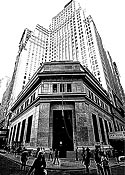
The Financial District
We hate to be the bearer of bad news, especially for an area most everyone wants to champion, but if this economy goes south, the financial district’s residents may wish they’d shorted their properties. Yes, it has cobblestone streets, turn-of-the-century façades, impressive views, and great transit. But it remains stubbornly in need of services (even though, as brokers and buyers endlessly point out, FreshDirect does deliver there), and it’s mighty quiet after its pin-striped daytimers head home. As many brokers will say off the record, if you have to compromise on where to eat and shop, it’s fringe. And in downturns, fringe neighborhoods almost always see dizzying drops. Moreover, though the area has attracted families, brokers say much of the new building is aimed at entry-level buyers. If they lose their jobs (and people starting their careers are more vulnerable) or elevated interest rates make a mortgage less attractive, they may decide to sell or just stick to renting. In recent years, new construction and commercial-to-residential conversions have added hundreds of units to the area; with inventory at an all-time low right now, those apartments are being snapped up by buyers willing to compromise on location. But in a recession, the same money they’re sinking into a luxurious one-bedroom way downtown, say $600,000, could potentially buy a similarly appointed pad on the Upper East Side close to restaurants and Central Park. Residents could wind up ditching this area for their first-choice neighborhood, and buyers who could take their place may give it the brush-off as well.
Risk Factor: 8.0
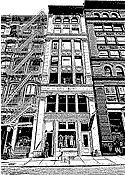
Loftland: Soho, Tribeca, and The Flatiron District
If you’re reading this in your downtown loft, you’re in luck: You own one of the most coveted properties in town, better protected from a downturn than almost any other. Take recent history as your guide: In the nineties, when Manhattan real estate reached a nadir, Soho and Tribeca lofts recovered way before the rest of the city, says Michael Martin of real-estate-appraisal firm Mitchell, Maxwell & Jackson. “The average sale price downtown turned the corner in 1994,” he says, “while it wasn’t until 1996 that the rest of the market began to rise.” The same thing happened after 9/11, says Corcoran’s Linda Gertler, who sold a $9 million loft right after the attacks to a celebrity couple who paid the full asking price. Of the areas with the highest concentration of lofts, the Flatiron district, with a pleasant mix of commerce and residential life plus lots of subway lines, is probably best shielded from a market dip. Tribeca’s solid, too, having been taken over by families so devoted to P.S. 234 that they won’t think about leaving till it’s time for junior high. (Corcoran’s MiMi Murphy notes that “they’re not buying for buzz or because celebrities love the area.”) The best of the newer conversions, in buildings like the Chelsea Mercantile and the Loft Residences at 116 Hudson, are unlikely to feel a downturn: “They’re so in demand, because they can’t be re-created,” explains Shaun Osher of the Newcastle Realty Group. Surprisingly, the grande dame of loftland, Soho, may feel more of a pinch, because its cachet has been eroded by the tourist mobs. Overall advice: Take cover, and wait for the worst to pass.
Risk Factor: 3.5
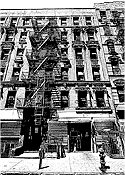
The Lower East Side and The East Village
The neighborhoods south of East 14th Street have changed a whole lot since the last downturn, but they retain one thing in common with their Rent-era past: youth. The buyers here are largely middle-income first-timers, just the crowd that could find itself defaulting en masse if interest rates spike. If that happens, those kids won’t be able to sell the $1 million condos in the new towers clustered around Houston Street for the $850 per square foot they paid. Moreover, trust-funded strivers have been flooding Alphabet City’s walk-ups—and then moving out just as fast. That transience brings instability. “NYU students will graduate, newlyweds will move when they have their first child, entry-level workers will get a job in California—which means more apartments on the market at any given time,” says Newcastle Realty’s Shaun Osher. One broker quietly admits that it’s “susceptible to being hit hardest if there is a recession,” Whole Foods notwithstanding. (The lack of subway access, long rationalized by residents trudging in from Avenue C, may become a factor again.) Two saving graces: One, its buyers are uncommonly passionate about the area, and are unlikely to flee to the Upper West Side or Soho. (Even if they get rich, they just move to the Carl Fischer building or the new Charles Gwathmey tower on Cooper Square.) And two, the neighborhood is still dense with rentals. That, Osher says, could allow future buyers to wait out the market’s lull in a floor-through overlooking Tompkins Square Park. A neighborhood filled with tenants may not be ideal, but it’s better than a ghost town of FOR SALE signs.
Risk Factor: 7.5
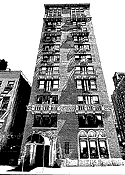
The West Village and The Meatpacking District
Buzz may have helped build the far West Village, but an economic downturn will prove that it lives up to its hype. Though it’s now one of the most popular and expensive places to live, thanks in part to high-profile projects such as the Richard Meier towers, prices will slip but not slide, and may even hold steady. For starters, like the rest of the West Village, it’s got a healthy mix of housing stock (from gleaming new condos to loft conversions) and residents (singles to families, celebrities to old homesteaders). This combination keeps it insulated from a mass exodus and extreme price fluctuations. Plus, like residents of Park and Fifth Avenues, newcomers here have paid staggering sums. “When people make that kind of investment, especially when there are a lot of them, the area’s protected,” explains downtown expert Shaun Osher of the Newcastle Realty Group. For the most part, the entire Village is a safe bet, and historically, this has proven true. Residential prices here fell 10 percent—annoying but not deadly—in the early to mid-nineties, according to the appraisal firm Miller Samuel; they actually rose 5 percent, sometimes even more, after 9/11. As is usual in Manhattan, condos are generally safer than co-ops, but not much more, as West Village boards are known to be persnickety about finances. The chanciest investments may be studios and one-bedrooms, many of which house NYU students and recent graduates with overstretched budgets. Another worry? The million-dollar marquee studios, which two power brokers simply describe as “insane.”
Risk Factor: 3.0
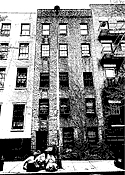
Gramercy Park, Murray Hill, and Midtown East
Say what you will about this area—it’s boring, it’s achingly unhip—but if the market takes a dive, its residents may have the last laugh. Sutton Place attracts older, richer buyers (often Park Avenue overflow) who are generally unaffected by recessions, and co-op boards here are tough, so there aren’t many defaults. Ditto for Gramercy Park, especially for apartments with those magic keys to the private greenery. (Warburg’s Judith Thorn, who’s specialized in the area for fifteen years, says every apartment she’s sold and resold there has gone for a higher price, “no matter what’s going on.”) Eternal underdog Murray Hill is surprisingly steady because it’s still undervalued. Families, often a stabilizing force, have discovered the area, lured by good deals and the excellent P.S. 116, says Bellmarcj’s Julie Friedman. But beware: New developments in the area, and in Gramercy, have tried to push the price ceiling past $1,000 per square foot, and if you bought into one of them pre-construction to get in on the ground floor, take a hard look at what you have. Though most recent projects are well built, some are Trojan horses that one broker calls “tiny boxes with cheap finishes.” (One 1,100-square-foot unit built in 2002 has been sitting on the market for five months, its asking price cut from $1.29 million to scarcely over a million. Its owners will barely break even—and this in a sizzling market.) If you had to rationalize your purchase —“it’s a bad layout but it has a big terrace,” or “it’s small and dark but it’s got marble baths”—then get ready for a dousing.
Risk Factor: 4.0

Chelsea, Clinton, and Hell’s Kitchen
In the mid-nineties, New York real estate’s unofficial Dark Ages, mortgage broker Paul Cole and his wife, Kelly, bought a one-bedroom in a full-service building in the West Thirties for $72,000. Its owners had paid more than $110,000 many years before but couldn’t afford to wait for prices to bounce back. And it’s likely that the Coles weren’t the only ones who found a fire sale: From 1989 to 1993, prices here fell a shocking 43 percent. But it was a different neighborhood then. The area’s no longer fringe, for which you can thank the gentrification gods (or demons) and even perhaps the glow of Time Warner Center, which bootstrapped prices in the West Fifties. Chelsea’s the most luxurious pocket, and the most stable. Even its heavily industrial western edge will likely ride out a recession: “It’s embraced by the river and is in the middle of an established market,” says veteran Elliman broker Leonard Steinberg. And with all types of housing, from tenements to townhouses, “that market’s exposed to a wider swath of owners,” says Jonathan Miller, president of Miller Samuel, an appraisal firm. In other words, the diversified portfolio of residents and businesses—restaurants and grocery stores, schools and churches, art and commerce, and a whole lot of committed gentrifiers who paid top dollar—add stability. The biggest question mark is the new “luxury” towers that have sprouted all over the West Forties, one with lovely views of the Port Authority Bus Terminal. Though they’re larded with condo goodies (gym, screening room), the area’s a long way from being established, which could mean a big dip.
Risk Factor: 6.0
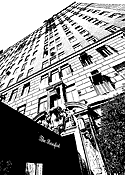
Old Luxe: The Gold Coast
In 2004, the most expensive co-ops on Fifth and Park Avenues sold for $25 million apiece; on Central Park West, they topped out at $20 million, according to Stribling & Associates’ Luxury Residential Report. And you think you’re going to pick up a sweet bargain there next year? Guess again. Today’s Gold Coast buyers are wealthy enough to be virtually impervious to what happens in the market, barring something ugly and public—a tabloid divorce, a scandal, a TV-show cancellation. Many of these buildings, don’t forget, require applicants to have a staggering amount in liquid assets to pass the board, and “one of the upsides of co-op-board financial stringency is that people don’t run into as much trouble,” says Frederick Peters, president of Warburg Realty. (The Dakota, among others, is known for requiring an all-cash purchase—no mortgages allowed.) Besides, notes Gumley Haft Kleier’s Michelle Kleier, these buildings’ boards know perfectly well that they have extraordinary, coveted spaces, magnificently carved and shaped by architects like Rosario Candela or Emery Roth. These apartments so rarely hit the market that once they do, they almost always find a rich admirer all too willing to pony up. At worst, this market segment will pause for breath, as it did after 9/11, before going right back into its standard climb. Will anyone actually buy the 19,000-square-foot Duke-Semans Mansion at 1009 Fifth Avenue—one of the last grand private homes on the Park, just put on the market by the descendants of the family that built it in 1901—for $50 million, even with all this talk of a bubble? We wouldn’t be surprised.
Risk Factor: 1.5
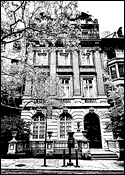
Townhouses below 96th Street
According to the Stribling Luxury Residential Report, the townhouse business has been phenomenal. Total sales increased in 2004 by 118.7 percent. (One 32-foot-wide house in the East Sixties sold for $9.5 million and was flipped the same day for $11.5 million.) Expect that ardor to cool off if the market nose-dives. It’s a niche business as it is, representing only about 1,000 properties, and these unique creatures often stay on the market for a long time. Of late, the market’s been propped up by nontraditional customers—foreign buyers, mostly—who, frustrated by the shortage of big co-ops or worried about board turndowns, bought houses instead, explains Stribling’s Kirk Henckels. It’s not so much that prices will free-fall if things go sour—they’ll simply grind to a halt, as owners stay put until business picks up. If you live in Greenwich Village, NYU has your back; the university’s demand is endless as it gobbles up townhouses like Pac-Man. Houses between Fifth and Madison are similarly protected, as are ones off Central Park West. And if your mansion’s in Murray Hill, where the undervalued brownstones haven’t peaked yet, you’re in the catbird seat. One spoiler: If the slump lasts and crime becomes an issue, expect a townhouse’s value to lose 25 to 50 percent more than a comparable apartment would. “No one wants to have vagrants sleeping on their doorsteps,” explains Jeffrey Jackson of appraisal firm Mitchell, Maxwell & Jackson. Still, a brownstone is never going to be a truly poor bet. “Even if things are bad, there’s always someone willing to step in and pay to live in one,” says townhouse broker Jed Garfield.
Risk Factor: 3.0

New Luxe
The past two years have seen a parade of trophy penthouses hit the market, their prices escalating as sky-high as the apartments themselves: the $27 million penthouse at One Beacon Court, a.k.a. the new Bloomberg tower across from Bloomingdale’s; the $30 million duplex atop Trump Park Avenue; the $42 million raw space capping Time Warner. The mega-million sales generate tons of buzz, but will these apartments still be worth the same if the much-contemplated bubble pops? Probably not. The prices have run up too fast for properties that, unlike their prewar equivalents, are not a finite resource. “There’s a certain sexiness in owning a $20 million [new] property that may not be so sexy when the market falls,” says Jeff Jackson, of leading residential real-estate appraisal firm Mitchell, Maxwell & Jackson. Every new marquee building gets a marquee penthouse, and there’s a very limited pool of buyers for these things, all of whom can easily decide to buy something else, like a townhouse. There’s a mitigating factor, of course—they’re rich enough not to care about market downturns—and for now, they’re still shopping. Douglas Elliman dynamo Dolly Lenz says she recently sold a $25 million apartment to a client who “barely batted an eyelash.” When asked how he felt about such a commitment, he told her, “I just bought a $19 million painting. To buy a $25 million apartment is not such a big deal.” Then again, a Renoir will still be a Renoir no matter what; an overpriced Trump apartment is, well, that.
Risk Factor: 6.0
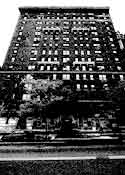
Upper East and West Side Family Apartments
If you’re looking for shelter in a real-estate storm, hide out in a classic six. In general, family-size apartments—essentially those with two or more bedrooms—on either side of Central Park are fairly bubble-proof simply because they’re so in demand. “The more square footage you have, the better, because space is rare,” says Corcoran’s Emilie O’Sullivan. During the nineties, when the market was in a tailspin, two- and three-bedroom co-ops and condos in these neighborhoods depreciated just like everything else, but managed to avoid crashing. Nowadays, as fewer couples desert the city when they have children, they’re powerfully in demand. “Good schools and families make an area more stable,” says Susan Abrams of Warburg Realty, and the Upper East and West Sides certainly have plenty of both—not that they were exactly rough turf to begin with. Still, some properties will hold value better than others. On the West Side, the prime pockets are the West Seventies and Eighties, and West End Avenue, Riverside Drive, and Central Park West; on the East, you can’t go wrong with Carnegie Hill, East End Avenue, or anything west of Lexington. Though for years prewars were universally considered better investments than postwars, that’s no longer the case, says appraiser Jeff Jackson. Today, better space wins out. If you live in a postwar three-bedroom with a gracious layout and drop-dead views off York Avenue, your property won’t depreciate as much as will a light-deprived maisonette with a claustrophobic plan off Madison. And a full-service high-rise with a gym and a concierge trumps one without the perks.
Risk Factor: 2.5
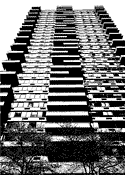
Entry-Level Apartments
You can blame everything on these little guys. “The small apartment has been the little engine that could,” says Frederick Peters, president of Warburg Realty. If the market tanks, though, expect the locomotive to stall. For starters, says Bellmarc Realty president Neil Binder, the low end is particularly vulnerable when there’s a downturn. (The average sales price for a studio dipped from $134,783 in 1993 to $108,830 in 1995.) Plus, entry-level apartments attract more first-time buyers who capitalize on low interest rates and claim a small piece of turf. To “shoehorn themselves into the best apartment they can afford,” Binder explains, many take on adjustable-rate mortgages. “But if there’s an earthquake in the economy”—and interest rates spike—“they’re putting themselves in a perilous position.” Agrees appraiser Jonathan Miller, “If you had to pick buyers who’d be more mortgage-rate sensitive, it’s them.” Besides, “jobs drive the values,” says fellow appraiser Jeff Jackson—and young people are more likely to get fired and sell off their single major asset. Get enough of them selling and there’ll be a glut; as it stands, studios and one-bedrooms already make up the lion’s share of the market. If you have a condo, you always have the option of renting it out, as many investors do, but this safety hatch only works if you can find tenants. “I know someone who got caught in the downswing in the 1990s, and she couldn’t rent her studio out because there were too many available,” says co-op lawyer Steve Wagner. “She finally had to sell it at a loss, because she had to go to California.”
Risk Factor: 8.0
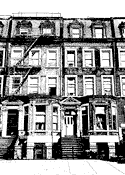
Harlem
There are really two markets in Harlem—new condos and old houses—and they have radically different prospects. Of late, developers have swarmed over upper Manhattan’s vacant lots and parking garages, and most have found buyers. But that oh-so-alluring bang for your buck could quickly turn into a clunk if this market stalls. (We can already hear cackles from the anti-gentrification crowd.) No matter what a lot of new buyers say—“I’d rather be here than in the Village!”—many would’ve settled elsewhere if they could. Add the potential for oversupply (it’s said that a third of Manhattan’s residential construction is slated for Harlem), and you have a recipe for trouble. That said, West Harlem is better situated than its eastern counterpart, where Harlem master broker Willie Kathryn Suggs says the market “will just grind to a stop and go nowhere until the next run-up.” The northward march of Columbia University will also keep prices up nearby, adds Bellmarc’s Neil Binder. Better-located new stuff, in central Harlem from 125th Street down to the park, won’t be hit so hard either.As for the brownstone market, recent buyers can consider themselves wise. Though houses here have appreciated 100 percent in the past year, they still cost half what they would 40 blocks to the south, so a large-scale correction isn’t in the works. Once here, buyers tend to stay, keeping inventory low. Best bets: Those near Mount Morris Park and in Hamilton Heights (where one has topped $2 million) and on Strivers Row. The finest houses—25-footers, those with meticulous renovations—will do best. As for East Harlem … look out below.
Risk Factor: 6.0
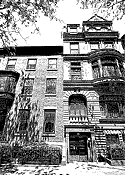
Established Brooklyn
Yes, that much-discussed $20 million house for sale in Brooklyn Heights is an anomaly. But in the established markets of Brooklyn—for our purposes here, the Heights, Boerum Hill, Carroll Gardens, Cobble Hill, Park Slope, and Fort Greene—most owners are sitting on safe ground. There’s a reason, after all, that all of Brooklyn Heights is landmarked: a large stock of graceful, irreplaceable, coveted townhouses. Those facing the Promenade are the top prizes, of course. Park Slope isn’t quite as refined, but it’s utterly beloved by its families looking for a stroller-friendly vibe and good schools. It’s doubtful that these owners will cash out in a downturn. The Slope is also insulated because it’s multifaceted, with many ethnicities working in varied industries living in all sorts of apartments, from brownstones to new condos, says Peggy Aguayo of Aguayo & Huebener. Skeptics may wonder about the stability of newly prime Fort Greene, but the area’s poised to ride out a bumpy market. In fact, says Elliman broker Marilyn Donahue, it may actually be as steady as Brooklyn Heights, thanks to its superlative housing stock and refurbished Fort Greene Park. Prices here also haven’t peaked—a Queen Anne one-family with intact mahogany wainscoting and a dumbwaiter was recently listed for a relatively modest $1.099 million. Proceed with caution, though, if you’re abutting Bed-Stuy, which may be rockier terrain. Another caveat: Brokers and developers try to extend the boundaries of prime neighborhoods to spread out the buzz. If your house is at, say, the bottom of the Slope toward the Gowanus Canal, you’re less protected from a fall.
Risk Factor: 3.5
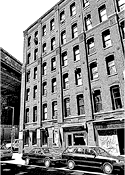
Edgy Brooklyn
Two kinds of buyers choose the less bourgeois stretches of Brooklyn: the arty crowd in Williamsburg, Greenpoint, and (at the wealthy end) Dumbo; and the families that have made a go of areas like Bedford-Stuyvesant, Red Hook, and Crown Heights. Few will do great in a downturn, but the hipsters will be better off than the rest, who are likely to find themselves with no buyers to cover those renovation loans. That’s especially true in Bed-Stuy, with too few newcomers to offset stubborn crime and weak schools. Paying $750,000 for a house here puts you well into a danger zone. Crown Heights is better off, because of better subway access and proximity to Park Slope, but its houses still seem overvalued. A far stronger bet is Red Hook: Though there’s no subway and a huge housing project, it has the critical mass to handle a downturn. Water access, plans for Ikea and Fairway, and a continuing shortage of good properties suggest a real future.Williamsburg will remain a destination for those attracted to expensive vintage clothing and Thai food set to techno, and Greenpoint, next door, is a leafy family neighborhood with loads of owner-occupied three- and four-story townhouses that many brokers believe are still a little underpriced. The first casualties will be apartments around the Lorimer L stop, which lack the nightlife draw. Anyone overpaying for a condo in the Gretsch Building should watch out, given that 10,000 new apartments with waterfront views will be on the market in a few years. As for Dumbo, it’s small enough to keep demand high: “It’s there to stay,” says appraiser Jeffrey Jackson.
Risk Factor: 7.0
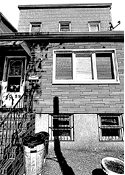
Queens: Long Island City and Jackson Heights
Lots of potential, lots of speculation, not enough people—yet. This is the story in Long Island City. While the neighborhood is solidly an artists’ haven—anchored by P.S. 1 and whatever’s left of MoMA QNS—there’s still not a strong enough residential core to insulate the area from a market crash. “Lots of speculation has driven prices up, but it hasn’t evolved enough as a neighborhood,” says Jeffrey Jackson, co-founder of the Mitchell, Maxwell & Jackson appraisal firm. “Isolated” and “windy” is how even enthusiastic residents describe the place, which still lacks a major supermarket. (FreshDirect doesn’t deliver, even though its headquarters is here.) The only luxury high-rise co-op in “Queens West,” Citylights, may even face competition from the planned Olympic Village next door, and a 400-unit condo complex rising nearby. The views of Manhattan from all these new developments are unparalleled, and the ability to commute to Midtown East in fifteen minutes will keep it attractive to some. But first, Vernon Boulevard will need more than a few cute cafés and bars to draw actual residents—not just speculators—to the neighborhood.Jackson Heights, an entirely different beast, is still what one appraiser called a “vanilla neighborhood” without the hipster vitality of Astoria to the northwest. Corcoran’s Megan Hoffman likens it to Brooklyn Heights, suggesting that gardens, fireplaces, and historical designations there will keep it attractive—even though it’s twelve local stops from Grand Central.
Risk Factor: 5.0
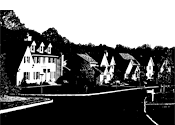
The Suburbs
If nothing else, life in the cul-de-sac is a fairly secure investment these days. Though home prices foundered in the crash of the late eighties (when the number of homes for sale in Nassau County increased by one-fourth in a single year), suburbanites have less to fear this time around. Greenwich, the de facto hedge-fund capital of the world, is teeming with ladder-climbers in an industry that barely existed fifteen years ago. They work and spend locally, and benefit from a tax structure that encourages ever-larger McMansions. Geographic moves are helping New Jersey and Long Island, too. “There’s been a shift westward of the central business districts in midtown,” says MM&J appraiser Jeffrey Jackson. That’s increased the appeal of Penn Station over Grand Central, which in turn favors New Jersey Transit and LIRR commutes. And as Long Island has witnessed double-digit percentage increases every year for the past three, MM&J’s Jean-Pierre Blaise says suburban homes are secured by something immeasurable: emotional value. You’re unlikely to cut and run “if you’re buying your primary residence to raise your two-point-five kids,” says Blaise. (Mortgage data suggest that Long Island’s single-family homes turn over every seven years, compared with four to five years for condos and co-ops.) Perhaps most fascinating is the urbanization of the ’burbs, as young buyers mimic a Real World existence in Metro-North country. “The ‘city living’ trend—we’re now seeing it in White Plains, in Norwalk, even Yonkers,” says Jackson. “There’s loft-building conversions in New Rochelle. These areas that were kind of blighted are being reborn.”
Risk Factor: 3.5

The Hamptons and The Catskills
Here’s the bitter pill: When the “correction” comes, the second-home market will see it first. “If you’re on the financial ropes, the place you fight for is the place you live in,” says Paul Cole, a mortgage broker at Trachtman & Bach. (Statistics show that second-home buyers default more often than primary owners.) Ron Guichard, who’s been selling in the Catskills for more than two decades, says that “everything flattened from 1992 to 1997.” The area’s poised to feel some pain, but brokers voice the plaintive hope that it’ll be better this time. At least it’ll do better than the Hamptons, which is poised for a hard fall. The run-up has been dizzying—instant doublings in value, millions made by spec builders. (One developer bought a house for $2.2 million last year, tore it down immediately, and sold its unfinished replacement four months later for $5.9 million.) A negative turn in the city’s fortunes almost immediately translates into problems out here, confirms Lori Barbaria of Prudential Douglas Elliman Bridgehampton. And Hamptonites can’t just lease their places out to survive a bear market. (Who rents a second home year-round for $10,000 a month?) Owners, then, may be forced to sell. All the same, such nastiness may be rare south of the highway in Southampton and East Hampton, where many residents are rich enough to wait it out. Besides, says Barbaria, “there are always people who’ll buy in down markets. They’re like crows sitting on a fence—they wait, they’ve got cash, they swoop in and get a deal.” Unless, in a Glengarry Glen Ross moment, Shelley Levene just sold you eight units of Mountain View. Then you’re really stuck.
Risk Factor: 9.0
With Kate Pickert and Will Doig